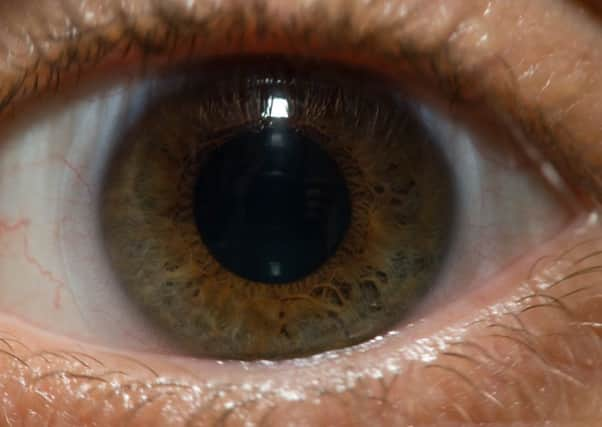Eye test gives flicker of hope to psychiatric patients
This article contains affiliate links. We may earn a small commission on items purchased through this article, but that does not affect our editorial judgement.


Eye tracking movements of around 1,200 volunteer patients - from Scotland to China and the Faroe Isles - are now being examined by an Aberdeen University spin-out company after it was awarded a £1.5m award from the Wellcome Trust and the UK Department of Health.
Saccade Diagnostics, founded by Dr Philip Benson, found that eye movements in those suffering from schizophrenia, bipolar disorder and major depression react differently to images when compared to healthy patients.
Advertisement
Hide AdAdvertisement
Hide AdAn eye movement test has now been developed to examine whether a patient is showing signs that they may be suffering from such a condition.


Crucially, it could quicken diagnosis for patients who can wait up to two years for treatment for schizophrenia to begin or up to 10 years in the case of bipolar disorder.
Dr Benson said the tests had shown encouraging results do far with trial to run until 2018.
“So far it seems to have become a more solid finding,
“This test could become extremely useful to help psychiatric patients to receive their diagnosis more quickly.


“Imagine being able to do a test in 30 minutes and knowing the result shortly after rather that wait 10 years to find out if you have bipolar disorder.”
Dr Benson said that it was normal for only one or two symptoms of such conditions to present themselves in patients at first.
As a result, there was a “certain amount of fence sitting done by clinicians,” he added.
“Of course, they don’t want to give to give the wrong diagnosis or give patients the wrong medication. In the case of bi-polar, it can be 10 years between the first symptoms and the manic episode.
Advertisement
Hide AdAdvertisement
Hide Ad“If our little test can pick up something that is systematically wrong in the patient’s eye movements, which are a closer match to someone with bipolar, it could be hugely beneficial to the patient. They could have a much shorter wait to access the right treatment for them.”
Dr Benson said a possible link between eye movements and psychiatric illness was first raised around 100 years ago.
The Aberdeen team found that the eye movements of those with schizophrenia were more erratic and jumpy than those in normal health when asked to follow a spot of light on a computer screen.
In addition, when presented with pictures of landscapes, faces or inanimate objects, patients tended to look less enthusiastically, more slowly and over a limited area, Dr Benson said.
The part of the brain which generates eye tracking movements is partly shared with the area that deals with cognitive abilities, such as vision, memory and attention, which are known to be impaired in those with serious psychiatric disorders.
While it is anticipated the test will be used by clinicians in their diagnostic toolkit, Dr Benson said a simpler version could be devised to help GPs make initial referrals to psychiatric experts.
Dr Benson also wants to work with teenagers and adolescents to determine who may be at risk of conditions such as schizophrenia and bipolar disorder given that both are genetic and usually triggered by stressful episodes, such as drug and alcohol abuse.
Dr Benson added: “If we could work with these really high risk adolescents, who may not present symptoms until they were in their early or mid twenties, we would be able to suggest the best thing they could do is just say no to everything that is going to be stressful to them and not to put themselves in these situations.”
DOWNLOAD THE SCOTSMAN APP ON ITUNES OR GOOGLE PLAY
